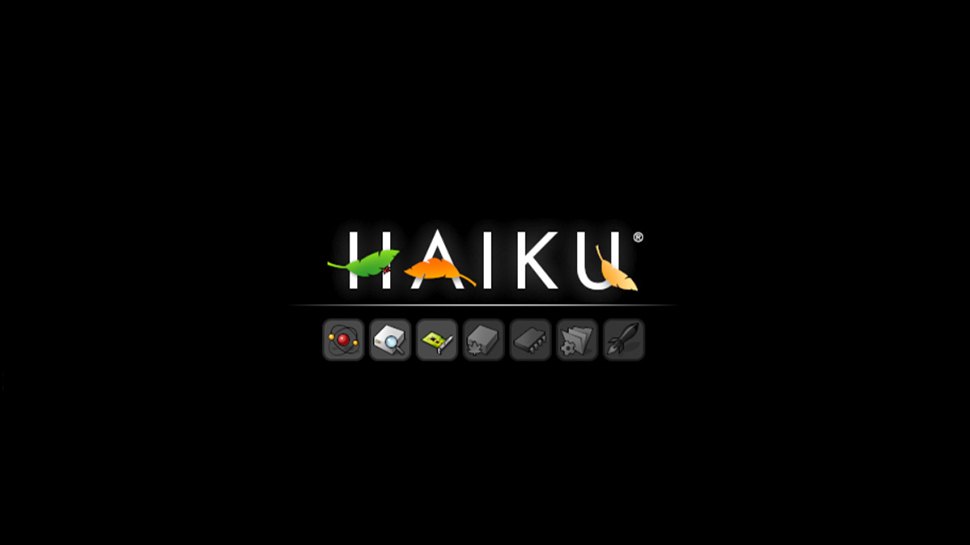Scion of obscure OS that could have replaced Mac OS gets a rare update, almost 22 years after it started — Haiku carries on the minimalist philosophy of BeOS, the pet project of one of Apple's former executives
Haiku version 1.0 is still a way off however...

In the mid-1990s, former Apple exec Jean-Louis Gassée founded Be Inc., a company best known for its BeOS operating system.
Despite its technical strengths, which included a responsive multitasking kernel, symmetric multiprocessing, and a 64-bit journaling file system called BFS, BeOS struggled to make a dent in a market dominated by Microsoft Windows. Apple briefly considered buying it but ultimately decided the price was too steep, and went on instead to acquire Steve Jobs' NeXT and use its OPENSTEP OS as the basis for what became Mac OS X. In 2001, Be Inc. was scooped up by Palm, and BeOS quietly disappeared.
That should have been the end of the story, but shortly after, a community-driven project called OpenBeOS surfaced, aiming to keep the spirit of BeOS alive. In 2004, it rebranded as Haiku, complete with a new logo to mark the fresh start. Since then, the Haiku project has been steadily chugging along, and Haiku R1 Beta 5 has just been released. Yes, it's still in beta - even after nearly 22 years - but it's edging ever closer to that elusive first stable release.
So what's new?
Haiku R1 Beta 5 follows on from R1 Beta 4, which came out over a year and a half ago. In that time the developers have resolved nearly 350 bugs and enhancement tickets, but it’s still not problem free. As the team warns, "Please keep in mind that Haiku is beta-quality software, which means it is feature complete but still contains known and unknown bugs. While we are increasingly confident in its stability, we cannot provide assurances against data loss."
You can download the latest release for both x86 32-bit and 64-bit platforms from the project's website (BeOS R5 compatibility is only available on the 32-bit version). The minimum system requirements for the 32-bit edition are pretty modest: an Intel Pentium II or AMD Athlon processor, 384MB of memory, an 800x600 monitor, and 3GB of storage. If you're looking at the 64-bit version, the recommended specs bump up to an Intel Core i3 or AMD Phenom II processor, 2GB of memory, a 1366x768 monitor, and 16GB of storage.
So what's new in Haiku R1 Beta 5? The standout addition is the simplified color selection in the Appearance preferences. Instead of wading through 30 different color options, you now only need to adjust three core colors, and the system calculates the rest. This is especially handy for dark mode enthusiasts, as it dynamically tweaks text and background colors for optimal readability. Advanced users can still manually adjust the full set of colors if they wish, but the new system makes customization more accessible.
The native icon editor, Icon-O-Matic, has also gained a significant upgrade including the addition of "reference images," allowing you to import bitmap images and trace vector paths over them. Along with perspective transformations and improved copy-paste functionality, creating and editing icons has become more intuitive. Other notable updates include enhancements to PowerStatus, which now auto-detects batteries on first startup and provides more accurate notifications, and improvements to Tracker, the file manager, which better handles read-only volumes with clearer visual cues. Haiku now supports basic input and output for USB audio devices and has made strides in TCP performance and network stack optimizations.
Sign up to the TechRadar Pro newsletter to get all the top news, opinion, features and guidance your business needs to succeed!
More from TechRadar Pro

Wayne Williams is a freelancer writing news for TechRadar Pro. He has been writing about computers, technology, and the web for 30 years. In that time he wrote for most of the UK’s PC magazines, and launched, edited and published a number of them too.